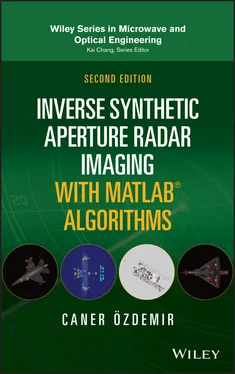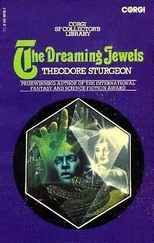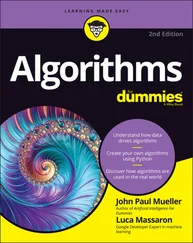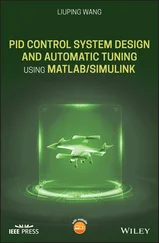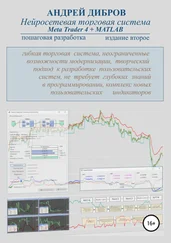1 Cover
2 Series Page
3 Title Page
4 Copyright Page
5 Dedication Page
6 Preface to the Second Edition
7 Acknowledgments
8 Acronyms
9 1 Basics of Fourier Analysis 1.1 Forward and Inverse Fourier Transform 1.2 FT Rules and Pairs 1.3 Time‐Frequency Representation of a Signal 1.4 Convolution and Multiplication Using FT 1.5 Filtering/Windowing 1.6 Data Sampling 1.7 DFT and FFT 1.8 Aliasing 1.9 Importance of FT in Radar Imaging 1.10 Effect of Aliasing in Radar Imaging 1.11 Matlab Codes References
10 2 Radar Fundamentals 2.1 Electromagnetic Scattering 2.2 Scattering from PECs 2.3 Radar Cross Section 2.4 Radar Range Equation 2.5 Range of Radar Detection 2.6 Radar Waveforms 2.7 Pulsed Radar 2.8 Matlab Codes References
11 3 Synthetic Aperture Radar 3.1 SAR Modes 3.2 SAR System Design 3.3 Resolutions in SAR 3.4 SAR Image Formation 3.5 Range Compression 3.6 Azimuth Compression 3.7 SAR Imaging 3.8 SAR Focusing Algorithms 3.9 Example of a Real SAR Imagery 3.10 Problems in SAR Imaging 3.11 Advanced Topics in SAR 3.12 Matlab Codes References
12 4 Inverse Synthetic Aperture Radar Imaging and Its Basic Concepts 4.1 SAR versus ISAR 4.2 The Relation of Scattered Field to the Image Function in ISAR 4.3 One‐Dimensional (1D) Range Profile 4.4 1D Cross‐Range Profile 4.5 Two‐Dimensional (2D) ISAR Image Formation (Small Bandwidth, Small Angle) 4.6 2D ISAR Image Formation (Wide Bandwidth, Large Angles) 4.7 3D ISAR Image Formation 4.8 Matlab Codes References
13 5 Imaging Issues in Inverse Synthetic Aperture Radar 5.1 Fourier‐Related Issues 5.2 Image Aliasing 5.3 Polar Reformatting Revisited 5.4 Zero Padding 5.5 Point Spread Function 5.6 Windowing 5.7 Matlab Codes References
14 6 Range‐Doppler Inverse Synthetic Aperture Radar Processing 6.1 Scenarios for ISAR 6.2 ISAR Waveforms for Range‐Doppler Processing 6.3 Doppler Shift's Relation to Cross‐Range 6.4 Forming the Range‐Doppler Image 6.5 ISAR Receiver 6.6 Quadrature Detection 6.7 Range Alignment 6.8 Defining the Range‐Doppler ISAR Imaging Parameters 6.9 Example of Chirp Pulse‐Based Range‐Doppler ISAR Imaging 6.10 Example of SFCW‐Based Range‐Doppler ISAR Imaging 6.11 Matlab Codes References
15 7 Scattering Center Representation of Inverse Synthetic Aperture Radar 7.1 Scattering/Radiation Center Model 7.2 Extraction of Scattering Centers 7.3 Matlab Codes References
16 8 Motion Compensation for Inverse Synthetic Aperture Radar 8.1 Doppler Effect Due to Target Motion 8.2 Standard MOCOMP Procedures 8.3 Popular ISAR MOCOMP Techniques 8.4 Matlab Codes References
17 9 Bistatic ISAR Imaging 9.1 Why Bi‐ISAR Imaging? 9.2 Geometry for Bi‐Isar Imaging and the Algorithm 9.3 Resolutions in Bistatic ISAR 9.4 Design Procedure for Bi‐ISAR Imaging 9.5 Bi‐Isar Imaging Examples 9.6 Mu‐ISAR Imaging 9.7 Matlab Codes References
18 10 Polarimetric ISAR Imaging 10.1 Polarization of an Electromagnetic Wave 10.2 Polarization Scattering Matrix 10.3 Why Polarimetric ISAR Imaging? 10.4 ISAR Imaging with Full Polarization 10.5 Polarimetric ISAR Images 10.6 Feature Extraction from Polarimetric Images 10.7 Matlab Codes References
19 11 Near‐Field ISAR Imaging 11.1 Definitions of Far and Near‐Field Regions 11.2 Near‐Field Signal Model for the Back‐Scattered Field 11.3 Near‐Field ISAR Imaging Algorithms 11.4 Data Sampling Criteria and the Resolutions 11.5 Near‐Field ISAR Imaging Examples 11.6 Matlab Codes References
20 12 Some Imaging Applications Based on SAR/ISAR 12.1 Imaging Subsurface Objects: GPR‐SAR 12.2 Thru‐the‐Wall Imaging Radar Using SAR 12.3 Imaging Antenna‐Platform Scattering: ASAR 12.4 Imaging Platform Coupling Between Antennas: ACSAR References
21 Appendix
22 Index
23 Wiley Series in Microwave and Optical Engineering
24 End User License Agreement
1 Chapter 3Table 3.1 Parameters for the simulated SAR example.
2 Chapter 5Table 5.1 Index allocation of positive and negative frequencies in DFT repres...Table 5.2 Comparative characteristics of different windowing functions.
3 Chapter 6Table 6.1 Angular speed and the total look‐angle width observed by radar for ...Table 6.2 Target simulation parameters for chirp pulse illumination.Table 6.3 Target simulation parameters for SFCW illumination.
4 Chapter 7Table 7.1 ISAR simulation parameters of biplane target for the look angle of ...Table 7.2 ISAR simulation parameters of biplane target for the look angle of ...
5 Chapter 9Table 9.1 Bistatic range resolution outcome for different values of bistatic ...Table 9.2 Bistatic cross‐range resolution outcome for different values of bis...Table 9.3 Calculated simulation parameters with respect to bistatic angle.Table 9.4 Parameters for Mu‐ISAR imaging example.
6 Chapter 10Table 10.1 Scattering matrices for various objects.Table 10.2 Full‐polarimetric ISAR simulation parameters of SLICY.Table 10.3 [ S ] and RCS matrices of SLICY substructures in LP and CP bases for...Table 10.4 Full‐polarimetric ISAR simulation parameters of Tank model.
7 Chapter 11Table Table 11.1 Near‐field ISAR simulation parameters for the targets in Fig...Table Table 11.2 Near‐field ISAR measurement parameters for the geometry in F...Table 11.3 Near‐field ISAR measurement parameters for the geometry in Figure ...
1 Chapter 1 Figure 1.1 The time‐domain signal of “prince” spoken by a lady. Figure 1.2 The frequency‐domain signal (or the spectrum) of “prince.” Figure 1.3 The time‐frequency representation of the word “prince.” Figure 1.4 Images of scattering mechanisms in the joint time–frequency plane... Figure 1.5 JTF image of a backscattered measured data from a dielectric‐coat... Figure 1.6 An ideal and real LP filter characteristics. Figure 1.7 Some common window characteristics. Figure 1.8 Effect of windowing. (a) Rectangular time signal, (b) its Fourier... Figure 1.9 Sampling. (a) continuous time signal, (b) discrete‐time signal af... Figure 1.10 Impulse comb waveform composed of ideal impulses. Figure 1.11 An example of DFT operation: (a) discrete time‐domain signal, (b... Figure 1.12 (a) Monostatic radar configuration, (b) scattered field versus f... Figure 1.13 Simulated range profile of an airplane. Figure 1.14 Simulated 2D ISAR image of an airplane. Figure 1.15 SAR image of the famous “hook” of Cape Cod, Massachusetts, USA.... Figure 1.16 The Nyquist sampling procedure for getting unaliased range image... Figure 1.17 The effect of sampling rate. (a) No aliasing due to oversampling...
2 Chapter 2 Figure 2.1 Different scattering mechanisms: (a) specular reflection, (b) sca... Figure 2.2 Electromagnetic scattering from a perfectly conducting object. Figure 2.3 The EM energy scatters in all directions when it hits a target. Figure 2.4 RCS values for perfectly conducting simple objects (all objects a... Figure 2.5 Simulated RCS (in dBsm) of an aircraft model at 2 GHz as a functi... Figure 2.6 Geometry for obtaining bistatic radar range equation. Figure 2.7 Geometry for obtaining monostatic radar range equation. Figure 2.8 Minimum receiver power corresponding to maximum range of radar. Figure 2.9 An example of CW radar waveform in (a) time domain, (b) frequency... Figure 2.10 Operation of police radar: (a) returned wave has the same freque... Figure 2.11 A linear frequency‐modulated continuous wave signal. Figure 2.12 Operation of LFMCW radar: (a) time‐frequency display of the tran... Figure 2.13 LFMCW radar block diagram. Figure 2.14 SFCW signal in time‐frequency plane. Figure 2.15 Range profile of a point target is obtained with the help of SFC... Figure 2.16 A short‐duration rectangular pulse in (a) time domain, (b) frequ... Figure 2.17 A short‐duration single‐frequency pulse in (a) time domain, (b) ... Figure 2.18 A short‐duration Mexican‐hat pulse in (a) time domain, (b) frequ... Figure 2.19 Comparison of the time‐domain pulse waveforms: (a) single‐tone p... Figure 2.20 Comparison of the spectrum of (a) single‐tone pulse and (b) LFM ... Figure 2.21 Pulsed radar systems use a sequence of modulated pulses. Figure 2.22 Illustration of Doppler shift phenomenon: (a) the leading edge o... Figure 2.23 Doppler shift is caused by the target's radial velocity, v r.
Читать дальше
